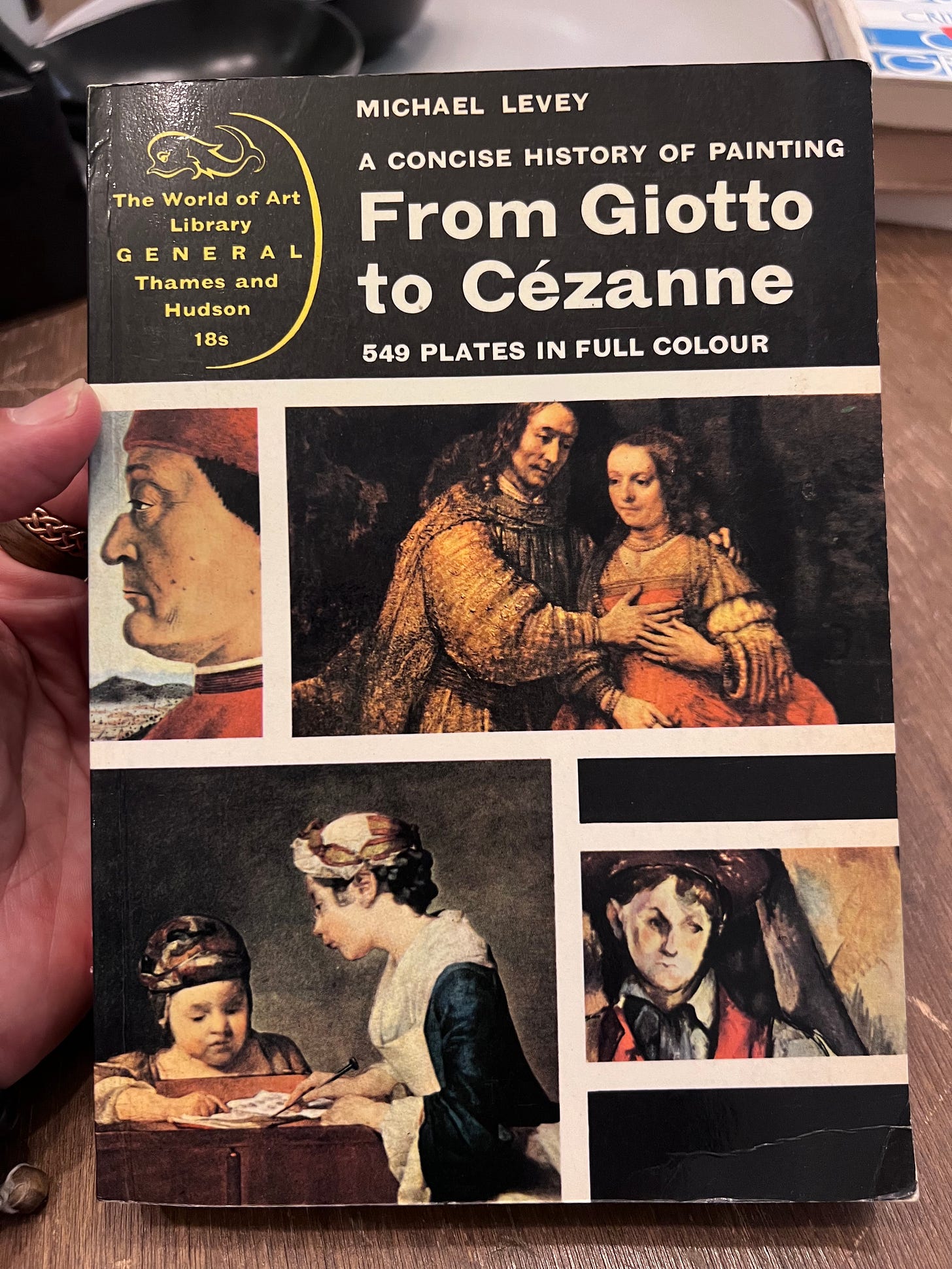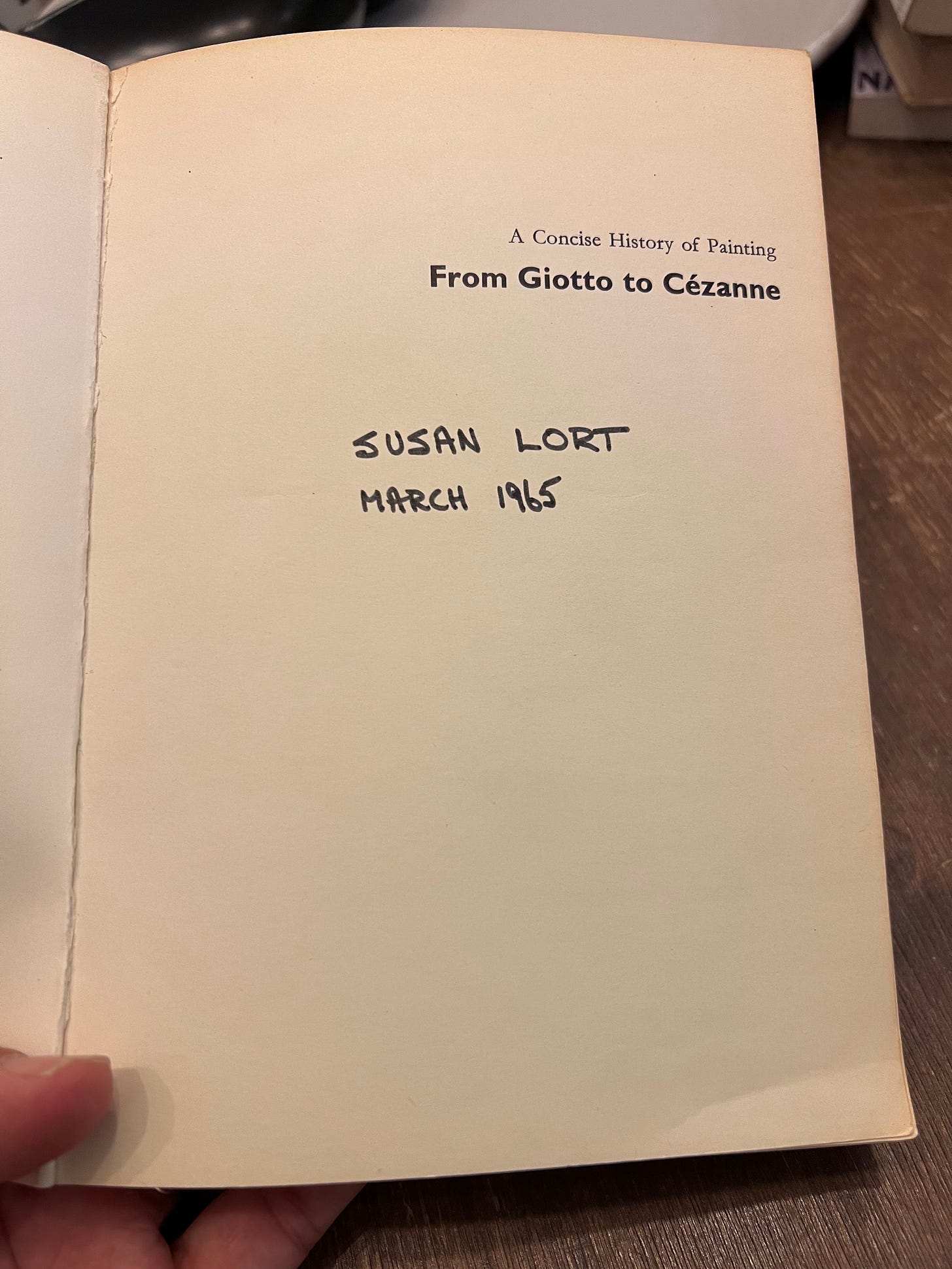Longing to Become Visual Poets of Upholstery and Bric-a-Brac
Reviving the Gentle Aesthetic of a Forgotten Movement
After mentioning the contemporary Intimist Renaissance in our last email and delving deeper into the works of the two Intimist superstars, Bonnard and Vuillard, we stumbled upon a vintage art history book during our used-book routine outing this weekend: From Giotto to Cézanne: A Concise History of Painting.
It's a paperback edition, printed and bound in Italy in 1964, never mind our dismay at the selection of the Rembrandt painting on the cover depicting a man laying his hand on a woman’s breast. Couldn't they have picked another painting back in the 60's out of the 549 color plates in the book? And it's zoomed and cropped to add insult to injury.
The book’s artistic journey through history concludes, as the title promised, with Cézanne. But just a few pages before, there's a section dedicated to the Intimists, to our delight, complete with a color plate of a stunning Bonnard painting we'd never seen before.
Michael Levey, the author of this compendium, discusses the Intimist movement with a hint of contempt. He acknowledges that the Intimists aimed to break away from traditional bourgeois taste standards and adopt a more purely painterly approach. However, he argues that they ultimately failed in their attempt, becoming something of a pastiche of bourgeois ideals and piggybacking on the Impressionist style after all. He prefers to call them Late Impressionists.
This may be a fair critique, but it doesn't diminish our love for the Intimists and their movement. What made us chuckle was Levey's description of Vuillard: "At his best, he is a poet of upholstery and bric-a-brac." Though Levey's tone carries an aftertaste of disdain, we couldn't love this characterization more. How we long to become poets of upholstery and bric-a-brac ourselves! Especially this month.
We've been practicing what Picasso dismissively called a "potpourri of indecisions" while painting our collection, and let us tell you, it's no easy task. We're not quite sure what Picasso was criticizing with such a paternalistic and passive-aggressive misogynist comment. Perhaps his opposition to the Intimists' softness resulted from his commitment to "aggressive" painting, bordering on unhealthy in its masculine predisposition, obsessed as he was with painting bull's genitals and scenes glorifying male power through cruelty. Yikes. This makes us even more appreciative of the softness and aesthetic pursuit of the Intimists, who offer the precise and most effective antidote to the picassian notion of modernity as inherently androcentric.
Anyhow, to close this meandering reflection, we are grateful for the capricious twist of fate that allowed this book to find its way into our hands—a testament to the serendipity that so often guides our painting practice. It was the best one-dollar spent this weekend.
The book bears the signature of Susan Lort, dated March 1965, precisely one year after its publication by Thames and Hudson in London. And so, we raise a quiet toast to this book and its long voyage from European shores to our corner of Southern California, where it has gently led us to the discovery of a stunning Bonnard.
Incidentally, this particular Bonnard now resides at the Phillips Collection in Washington, D.C., home to the most extensive collection of his works in the country. If ever you find yourself in that city, we beg you to be our eyes and pay a visit so you can share your bonnardian thoughts with us.
And to Susan Lort, wherever you may be, we extend our heartfelt thanks. We now stand as ardent defenders of the Intimist movement, and we couldn't be more excited by this calling.







